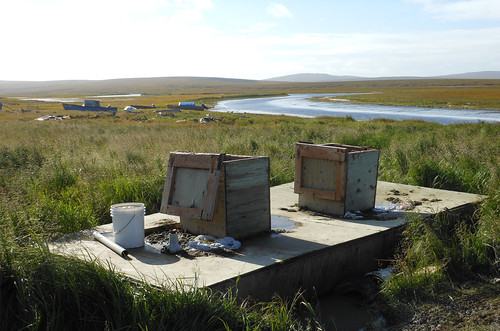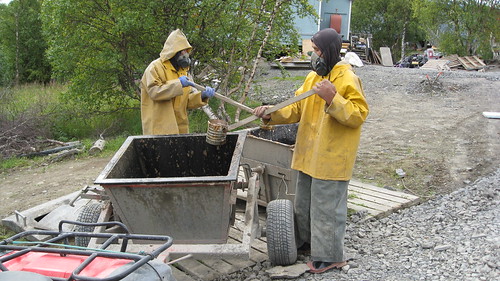The thought of having to hand-carry a honey bucket, (a five gallon pail filled with human waste) out of your house and dump it to an outdoor common collection container in winter temperatures that drop to -55 °F, is an unpleasant scenario. For some residents in the community of Lower Kalskag, and other rural Alaskan communities, this is a reality. They have no indoor plumbing, and no indoor hot or cold running water.
The community of Lower Kalskag, Alaska, is remotely located 350 miles west of Anchorage in a persistent poverty area. This small, predominantly Alaska Native community has a population of around 280 and roughly fifty percent of its homes still lack adequate sanitation systems. The lack of sanitation services is a dire health and safety issue faced daily by a number of rural Alaska residents.

However, the community of Lower Kalskag also provides a glimpse of the progress and success of the Memorandum of Understanding (MOU) that was executed by USDA-Rural Development (RD) and its partners on June 15, 2011. Those partners, including the Alaska Native Tribal Health Consortium (ANTHC), State of Alaska’s Village Safe Water Program, and Indian Health Service, are essential in helping to provide rural Alaskan communities with safe and healthy sanitation systems. Under the MOU, a phased approach is being utilized to successfully get projects moving through to the construction phase.
It is through that phased approach the community of Lower Kalskag has received service from USDA’s Rural Alaska Village Grant program (RAVG). In Federal Fiscal Year 2010, Lower Kalskag received a grant from the RAVG program to design proposed utility improvements. The design was finalized in early 2012 and allowed the ANTHC, on behalf of Lower Kalskag, to apply for a construction grant to serve homes in the community. Construction is anticipated to be underway by this summer.
The effort to retire the use honey buckets in this community, and other rural Alaskan communities, is no small feat. It is an effort among the partners of the RAVG program and the community of Lower Kalskag. The result of those efforts and the grants provided by the USDA’s RAVG program will help improve the health safety of community members for generations to come.
To find out more about USDA water and environmental programs, and how they could benefit your community, click here.

